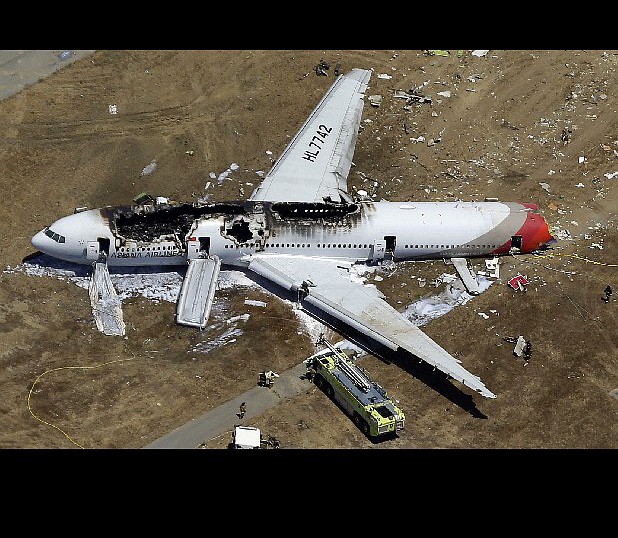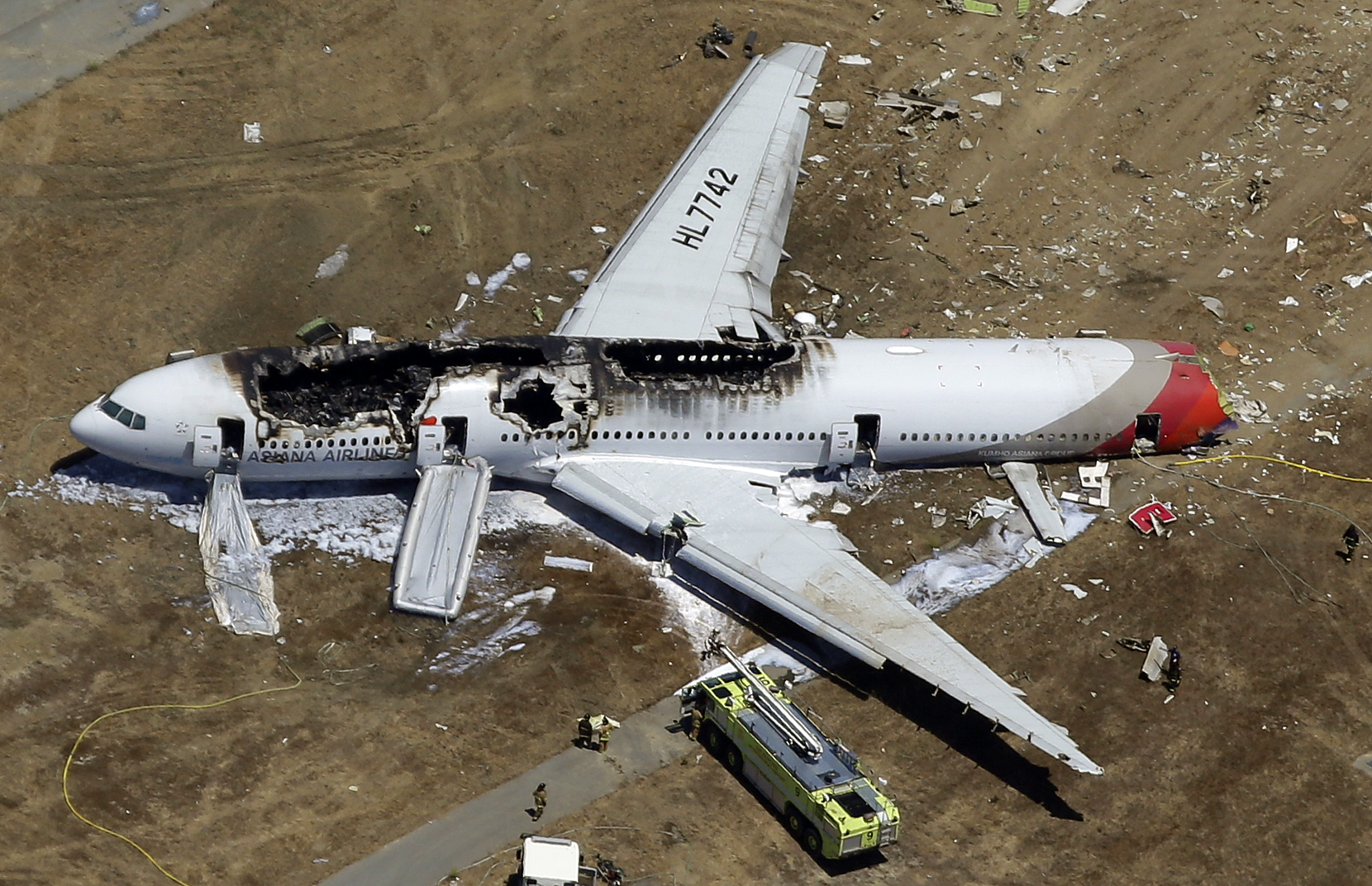SAN FRANCISCO - After departing from Shanghai and stopping in Seoul, Asiana Flight 214 makes its final approach into San Francisco International Airport following a 10-hour flight across the Pacific Ocean. A preliminary review of the crash by U.S. investigators turns up the following:
- APPROACH PROCEEDS NORMALLY: Pilot Lee Gang-guk, making his first landing at San Francisco in a Boeing 777, is at the controls. His training instructor, Lee Jeong-min, is the co-pilot and is on his first flight as an instructor. They receive clearance from air traffic control to land without instrument landing system. Visibility is about 10 miles with winds out of the southwest at 7 knots.
- PLANE DESCENDS: At 1,600 feet and 82 seconds before impact, the autopilot is disengaged, a normal procedure. At 1,400 feet and 73 seconds before impact, the plane's speed is about 170 knots.
- 35 SECONDS FROM IMPACT: Automated callout in cockpit signals plane is at 500 feet. Speed has dropped to 134 knots, just below the optimal landing speed of 137 knots that the pilots believe has been programmed into the "autothrottle." Lee Jeong-min recognizes the plane is coming in too low and tells Lee Gang-guk to "pull back."
- 18 SECONDS OUT: Automated callout indicating plane has reached 200 feet. Speed is 118 knots. The Precision Approach Path Indicator that uses red and white lights to tell pilots if they are approaching correctly is all red, indicating the plane is too low.
- 8-9 SECONDS OUT: Automated 100-foot callout. Plane is traveling at about 112 knots. One of the pilots calls for more speed and throttles begin moving forward.
- 4 SECONDS OUT: The stick shaker, a yoke the pilots hold, begins vibrating, indicating the plane could stall.
- 3 SECONDS OUT: The plane is traveling at 103 knots, the slowest speed recorded by the flight data recorder. The engines begin increasing power from 50 percent. One pilot calls to abort the landing and go around for another try.
- 1.5 SECONDS OUT: A second pilot calls to abort the landing.
- CRASH: The plane, which has increased its speed to 106 knots, clips the seawall at the end of the runway with its landing gear and then its tail, which breaks off. Three flight attendants in the back of the plane are ejected but survive. The plane spins on the runway and slides to a stop. The controller declares an emergency and rescue vehicles rush to the scene.

